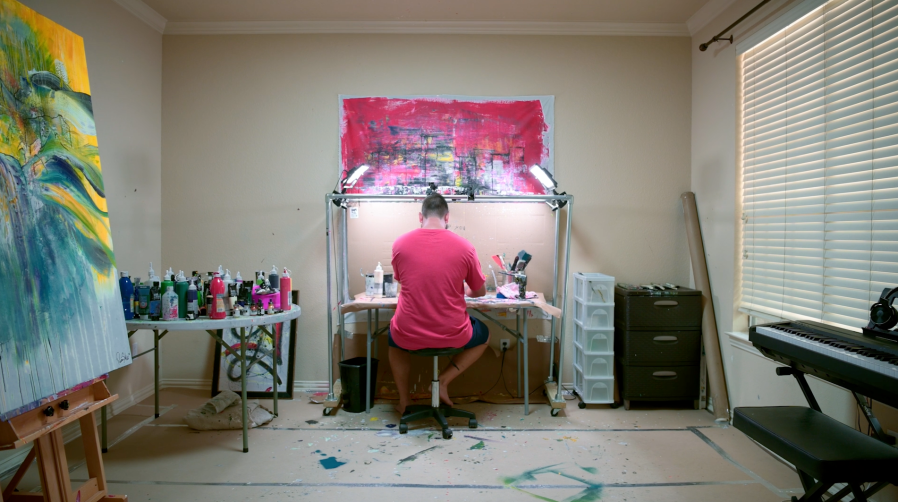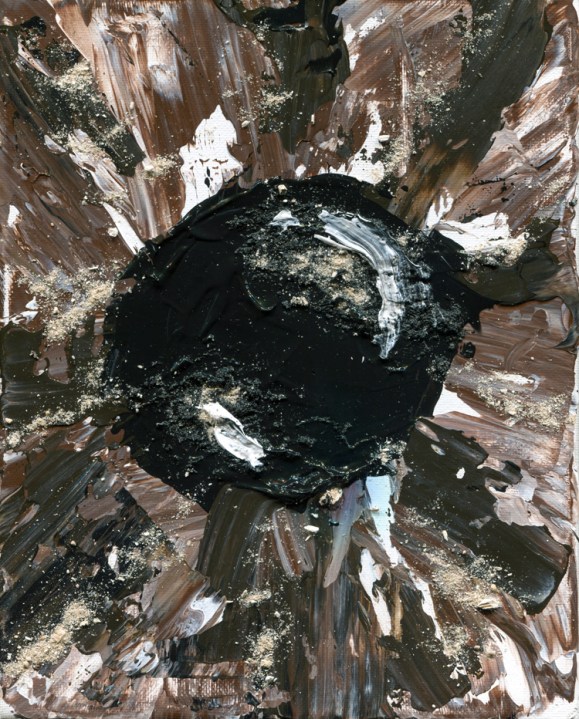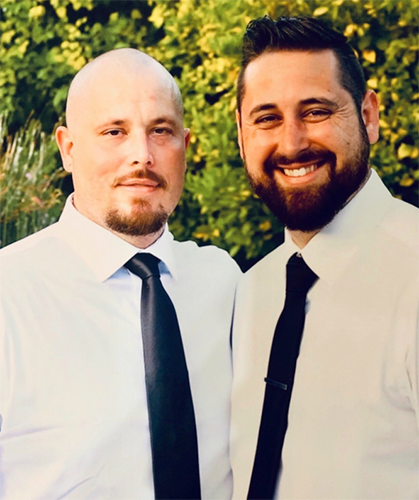It may have been actress Carrie Fisher who said “Take your broken heart, make it into art,” but if you ask a therapist, you’ll find there’s some truth to that catchy one-liner.
Death, change, mental illness and trauma all stir up difficult feelings, and creating art in response to strong emotions is “inherently therapeutic,” according to art therapist Lindsay Lederman.
“We have only so many words to describe emotions, and specifically with trauma, but for most people, it’s hard to describe how we feel,” she said. “Usually, we’re on autopilot. Rarely do we give ourselves the time and space to access the parts of our minds and bodies that need support.”
Preston Zeller, an Orange County native, did just that with his documentary “The Art of Grieving,” a film that details his journey of creating 365 paintings — one a day for a year — and arranging them in a large mosaic memorializing his brother’s death from an opioid overdose.
The multi-hyphenate storyteller used his abstract art skills and his education in film at Chapman University to document his artistic response to his question of “What is the journey like, going through grief?”
In the months following the loss of his older brother Colin at age 35, Zeller created one painting each day for the 10-foot-by-20-foot large-scale piece of artwork, which is largely abstract but includes a pair of specific touches related to grief.

First, Zeller included a black rectangle that connects across six canvases — the “inception point of grief” — that is surrounded by sections of green, yellow, red, orange, purple and blue, which represent the “spectrum of emotions that you feel.”
The paintings were created months after Colin’s passing, but mourning is a complex process, and when looking back at what he had created a few weeks earlier, a “reflection point” showed how his mindset changed.
“I would go through periods of being angry or depressed or whatever, it was and look back a week or two or three prior, and realize, ‘Oh my gosh, those paintings make sense. That’s how I was feeling …,’” he said. “Here are all these clichés around grief, ‘time heals all wounds’ and things of that nature, but people move through grief at very different paces. We try to pinpoint grief as being a separate emotion, and it’s a spectrum of emotions. You feel all of it at one time.”
The second non-abstract element is the last painting Zeller created, in which he featured eye imagery, an important symbol that reminded Zeller of the quickest way to tell if his brother was sober or not. But Zeller included some of his brother — literally.

Colin Zeller’s ashes are sprinkled on the piece.
“I’m painting about my brother who is gone, and here I’m going to use some of his literal bone fragments in a painting that’s supposed to represent a piece of him,” Zeller said. “It has this very meta idea about it, but feeling the remains of somebody, which most people don’t, is a very strange, quasi-spiritual experience, but especially when it’s someone you know. I’ve painted with other people’s ashes as a commission, and it’s still a heavy experience. Painting with his, it was therapeutic in some way, but there’s a lot of mixed emotions when you’re doing something like that.”
For the documentary, Zeller and friends largely did much of the production work themselves, but to help tell the larger story of art and its therapeutic benefits, Zeller partnered with the Art Therapy Project in New York and Lederman, who was then the nonprofit’s clinical director but is now in private practice.
“The first time I spoke to him, I was so impressed with how he went about this and how he’s challenging the way our culture deals with loss. We don’t do that very well,” she said.
Zeller believes that’s what contributed to the substance abuse issues and ultimate death of Colin, a U.S. Army combat veteran.
“I realized a lot of what my brother was going through was unresolved grief, that’s what partially pushed him to use the drugs he did … He wasn’t sure how to ever deal with what he was dealing with. That led to his demise. For me, I felt like I’m doing some grieving for the both of us and I can take what some of his shortcomings were and help others by showing what I’m working through and do it better,” Zeller said.
Zeller said since its release, “The Art of Grieving” has prompted some viewers to reach out and let him know that watching his struggle with loss has helped them with their own issues.
“Other people watching the documentary and coming back to me and saying … ‘I never thought of doing art as a way to work through my grief’ and bringing out paints and working and sending me pictures of their work, that’s hugely gratifying,” Zeller said. “The hypothesis behind this whole project is being validated.”
The documentary has been lauded by Vancouver’s Bridge Fest, the Los Angeles Film Awards and the INFLUX Film Awards, but one critic’s words in particular stand out to Zeller as a sign of a job well done.

Alan Ng’s review for Film Threat noted that “‘The Art of Grieving’ makes the case for art therapy, in all its forms, as an effective and visually stunning way of finding meaning in tragedy.”
“[That praise is] better than any film festival,” Zeller said.


























